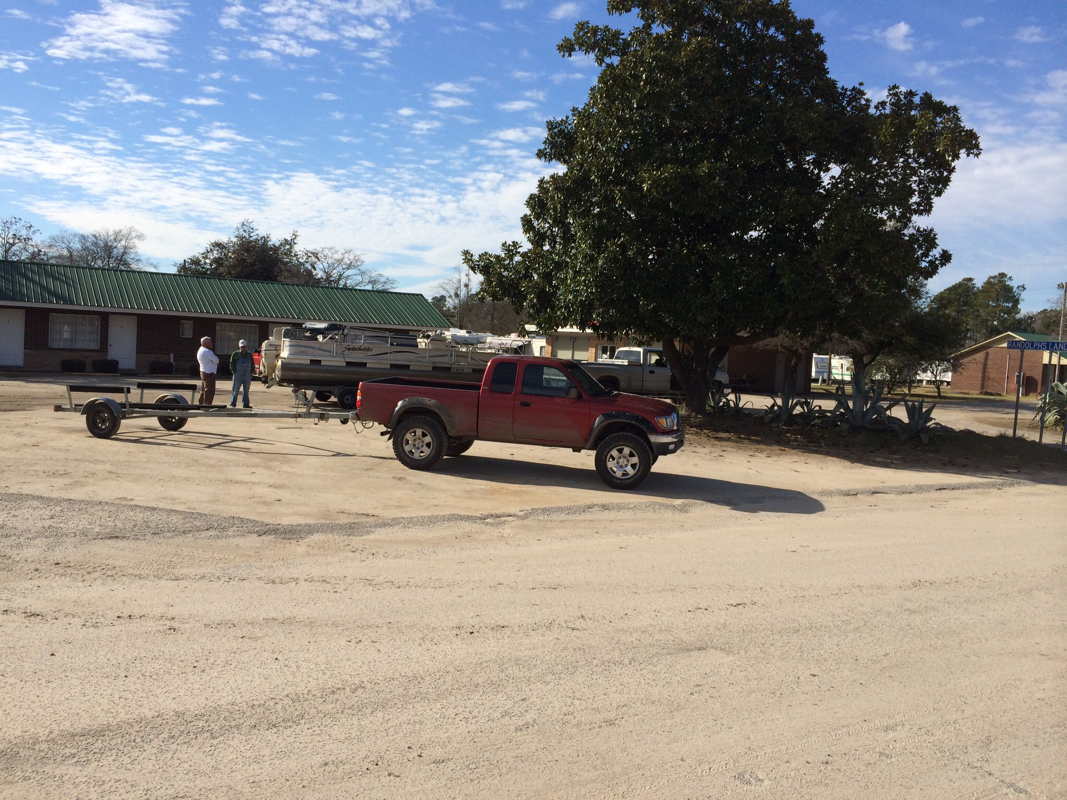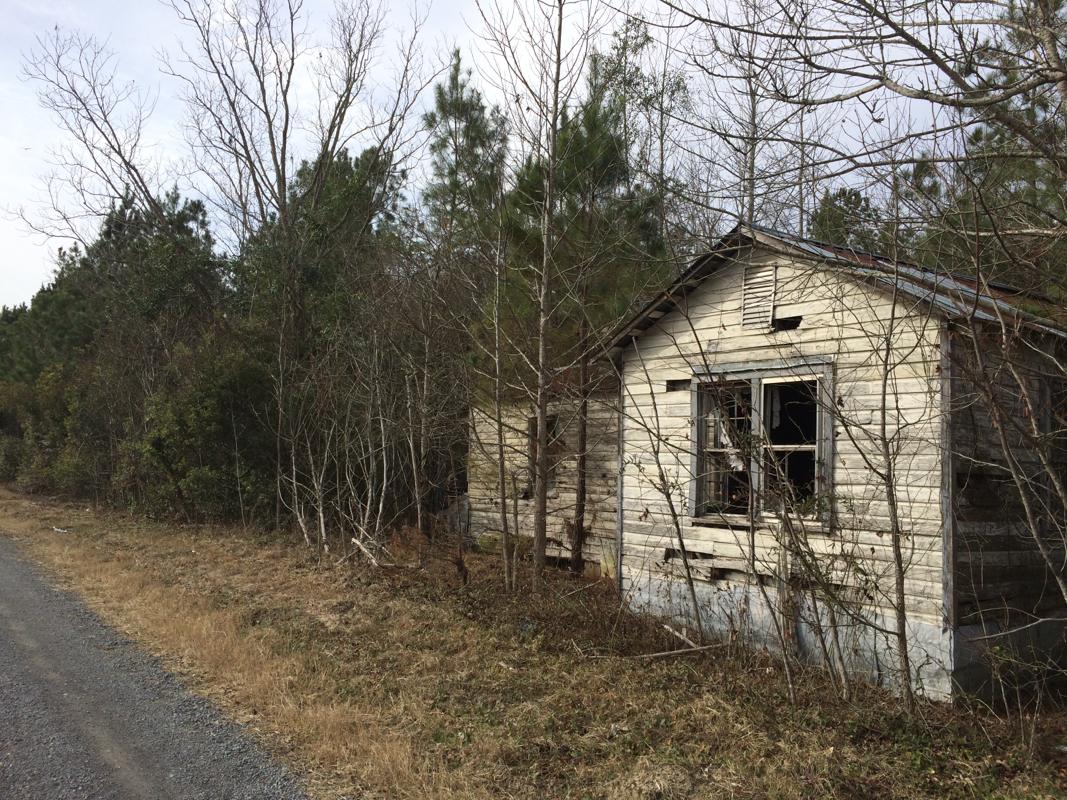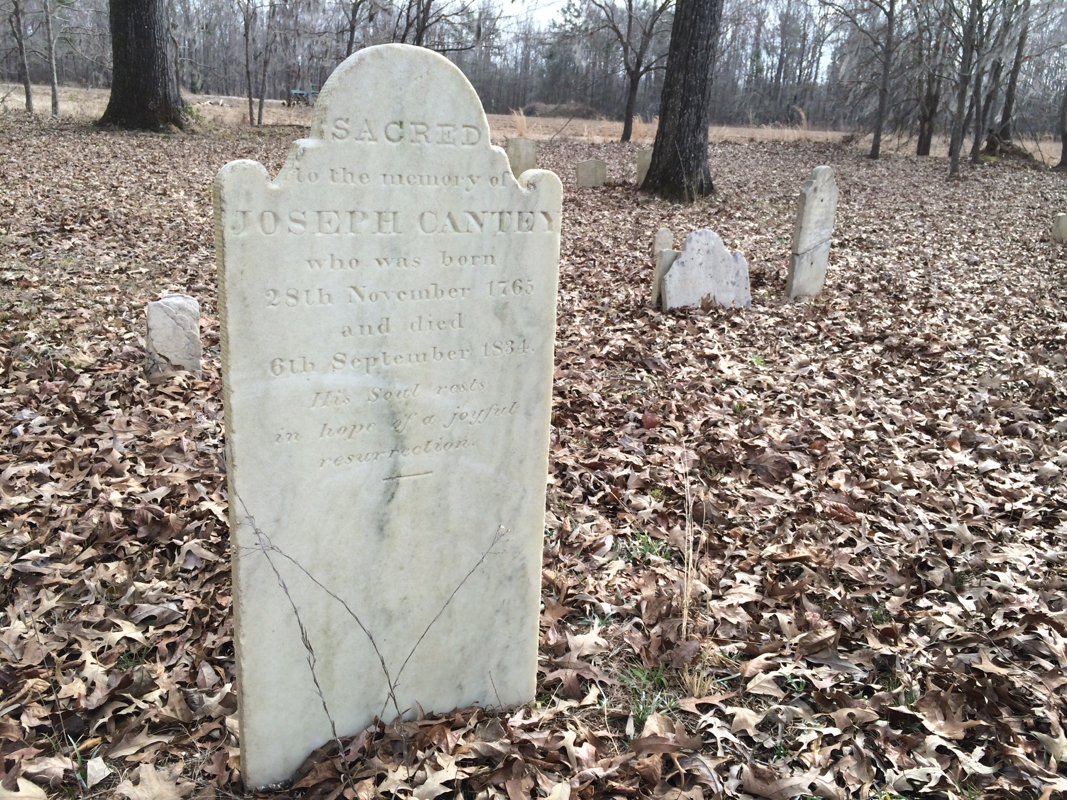As we walked down a footpath among the enormous trees populating Congaree National Park, Rob said, "This may be the most Lawsonian moment of your entire trek." And he may be right.
Congaree exists as the result of protection by private owners and then the government of the last and best old-growth bottomland hardwood forest in the nation. Much of it has never been logged, and some is virgin forest. In the swamps of the Congaree River, bald cypress and tupelo grow to enormous sizes: there are cypress trees of up to 16 feet in circumference and 127 feet high. On what amounts to rises -- a few inches above where the floodwaters usually stop -- loblollies grow to 150 feet or more, and it almost hurts your brain to look at them.
It's spectacular. I'd love to come back when it's green, and I'd love to come back to canoe into the back-back-backcountry, where the virgin cypress stands are. But even so: seas of cypress knees, boardwalks for miles through breathtaking view after breathtaking view, and it all is, yes -- very much like it would have been when Lawson walked through the territory not far from here.
But -- okay, does that make it the most Lawsonian moment? I guess that brings up what I'm out here to do. Yes, it's amazing to see what Lawson would have seen. But I'm really out here to see what I can see now, so if you don't mind my saying, at the moment I think of the most Lawsonian moment of my trip so far as walking up SC highway 375 from the tiny town of Gourdin to the Lake Marion dam, where we had left ouf car in the parking lot of Randolph's Landing, Motel, Campground, Fishing Pier, and Filthy Restroom, with a sand parking lot and a chainlink fence and and a magnolia tree with a trucck parked under it and roosters that crow when you walk up.
I mean, that's what Lawson did, right? Was see what was out there and talk about it. I got a lot of satisfaction out of buying a caffiene free Diet Coke there and using that awful restoom (it was the women's! the men's was closed off!).
That is, much of this trek has been road walking, and when you walk along roads designed for you not to walk along them, you see the country in a way that it's not quite prepared for you to see.
I would title this segment, then, "Substations, Churches, and Crap." As Rob and I walked, what we saw constantly were the unprettified underpinnings of our world: electrical substations behind chainlink fences, and cable pedestals in front of houses set far back from the highway. Orange plastic pylons announced where, beneath us, communications cables ran, and above us we never laccked for eelectrical wires and cable. Sometimes that was all -- we wondered who "Henry" was, who wrote his name on a utility pole and the back of a stop ssign, but then our map told us we had passed Henry street, and that was as much signage as we got.
Or we learned a lot about the town of Santee when we noticed that a restaurant, less than 60 miles from the coast, served us linguini with shrimp that came frozen in a bag from Food Lion, but made sure they had what they called a Gentlemen's Club but you and I would call a strip joint attached to the back. That's what you do when you're walking through the country: you observe and you learn.
The second thing we noticed was churches. More churches than people, and by a long shot. We would walk along a neighborhood of beat little single-wides, the occasional neat brick ranch or even a row of them, and a series of atmospheric but utterly abandoned heaps, and then there would be a bright sparkling church, and then another. Our host the Guerry Family in Jamestown generously hosted us in their church; the friendly Nina allowed us to park in front of hers in Lane. Church people are the nicest people in thee world, but we heard from everyone that the little churches are dying. They don't look it, though the households often do.
Finally, trash. We joked about Bud Light being the sponsor of South Carolina's roadside littering community, but it's really not much of a joke. You just cannot fail to notice that people throw an awful lot of crap on the road. And though we might yearn for a nice deposit bill to encourage people to return their cans and bottles to the store, it is evident that in the absence of cans and bottles people will happily toss gigantic cups, fried chicken boxes, rags, and most anytthing else out the windows of their cars. I cast no blame -- I doubt it's better in any other state, and I know it's no better in North Carolina where I live, but it's awful. It just is. You can call that observation.
But we observed far more than that. For one thing, according to my notes, at 11:45 a.m., January 20, the Lawson Trek reached its first hill. That is, for the first time in our trek, we've taken a step towards the end of the Coastal Plain. About 50 miles along the Intracoastal Waterway all at, exactly, sea level, then about 60 miles or so up the Santee River, and we have begun to experience landscape variation, not just the pure flatland of the coast.
I'm not exaggerating when I say Rob and I were delighted to note this. Not that we were glad to get away from the coast -- just that we were excited to be able, by walking instead of zooming along at 60 mph, to actually notice what the land was doing. We came up to another dip later, and an actual road cut after that. We're making progress, no doubt about it.
And we saw more than just houses and trash. We saw vultures swinging in thermals in flocks of a dozen or more, red-shouldered and Cooper's hawks arcing above and zipping by us. Along the road we heard precious little birdsong -- though plenty of tree-farming equipment -- but when we got into the Santee National Wildlife Refuge on Wednesday and the Congaree on Thursday we encountered pileated woodpeckers, chickadees, cardinals, wrens, and even some feral pigs (bloodline: brought to North America by explorers starting with De Soto, with wild boar added by rich hunters with poor fencing capacities since the 1800s).
We saw great blue herons near our cabin at Santee State Park and heard barred owls in the middle of the day at Congaree. What's more, we just got to spend day after day walking, which is good for the soul in the way almost nothing else is.
We walked by the enormous Longlands Plantation, whose thousands of acres are patrolled by dogs, their signs constantly warn (we'll learn more about what they do there and share it) and the beautiful suimple house below, where they have laundry flapping on the line. Is there anything as lovely and calming as laundry flapping on the line as you walk by a house?
Lawson notices at one point further on that he's stopped seeing Spanish moss, and we're looking for that, but so far we're still seeing it, and also things like reindeer moss, which we crowd-sourced.
We also crowd-sourced a pecan plantation (seriously -- the pecan tree in my back yard looks totally different, so I was led astray) and an absolutely stunning bacterial film on some of the many cypress tupelo swamps we saw that would be disgusting if it were pollution, as we originally believed, but since it's just Mother Nature having her fun it's pretty neat.
We took a walk. We saw the countryside, from the churches to the trash to the restrooms tto the turkey vultures and barred owls and cypress swamps.
It's good to be walking along.











 RSS Feed
RSS Feed